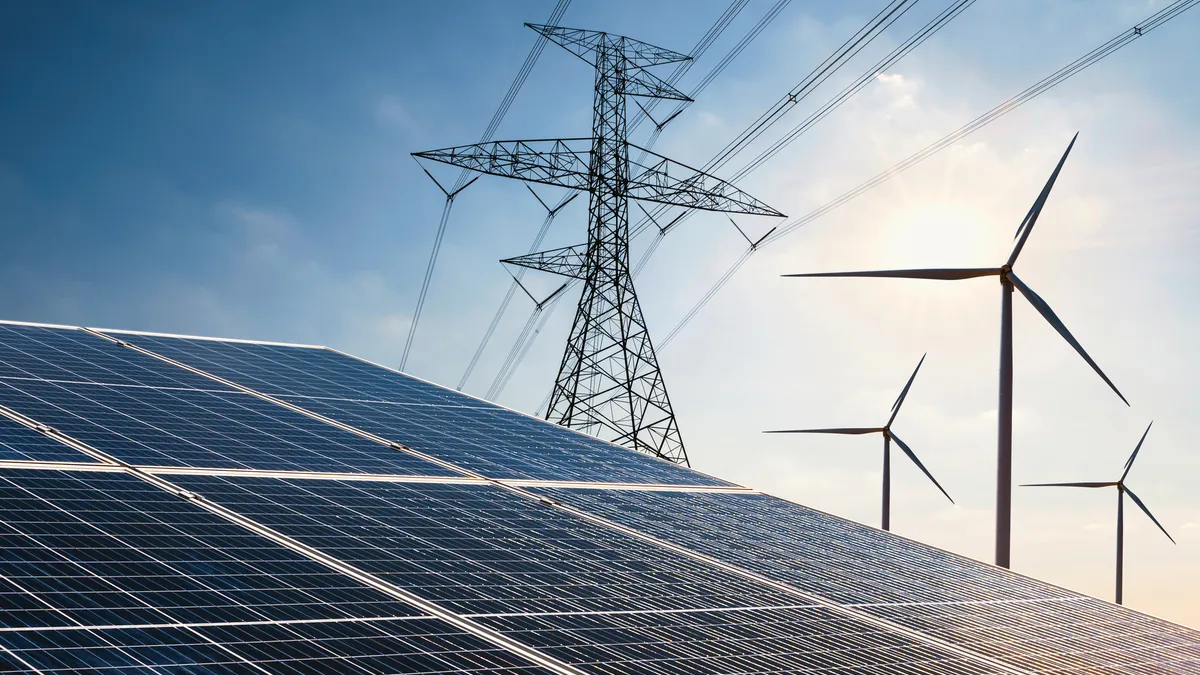Dive Brief:
- In an effort to spur clean energy development, the U.S. Department of Energy is launching a program to improve the grid interconnection process through a partnership with utilities, grid operators, state and tribal governments, clean energy developers, energy justice organizations and other stakeholders.
- The Interconnection Innovation e-Xchange (i2X) initiative will develop solutions for faster, simpler and fairer grid interconnection through better data, roadmap development and technical assistance, the DOE said Tuesday.
- While the Federal Energy Regulatory Commission prepares for possible long-term solutions to improve the interconnection process, the DOE initiative may provide near-term relief to the backlog of interconnection requests, according to Jeff Dennis, Advanced Energy Economy managing director and general counsel.
Dive Insight:
There are about 1,400 GW of planned generation and storage capacity in interconnection queues across the U.S., reflecting a surge in solar, energy storage and wind development, according to a report released in April by the Lawrence Berkeley National Laboratory.
As the queues have grown larger, it takes longer for transmission providers to complete interconnection studies, which determine if grid upgrades are needed to bring proposed projects online, according to the report. It took 3.7 years on average between a project entering the interconnection queue and coming online in the last decade, up from 2.1 years in the previous 10 years.
“Eliminating the gridlock that’s slowing down clean energy deployment is critical to increasing access to cheaper electricity for American families and businesses,” DOE Secretary Jennifer Granholm said in a statement.
The bipartisan infrastructure law, with about $65 billion in grid spending, is expected to support additional clean energy development, adding to the interconnection queue backlog, the DOE said.
The initiative includes a stakeholder “engagement center” that will bring stakeholders together in working groups, with a goal of identifying interconnection barriers, sharing best practices and testing solutions to interconnection challenges, the DOE said.
Based on stakeholder comments, i2X will develop a 5-year interconnection roadmap for improving interconnection processes, reducing interconnection timelines and costs, and maintaining grid reliability to meet local, state, regional and federal decarbonization goals, according to the DOE.
DOE said it will give stakeholders direct support to put interconnection solutions in place.
The initiative also includes a focus on disadvantaged communities.
“Due to the historic lack of investment in grid infrastructure in disadvantaged communities, these communities can have disproportionately higher barriers to interconnecting new solar installations,” the DOE said. “Interconnection application processes can also require significant expense and expertise, which can be prohibitive for small-scale and community-based developers.”
The DOE launched the initiative as FERC is preparing to issue a proposal to reform the interconnection process, which was the focus of a FERC-National Association of Regulatory Utility Commissioners transmission task force meeting last month.
“As FERC works to bring more certainty to the interconnection process and the planning and funding of transmission upgrades needed to meet demand for clean energy resources in the long term, near-term steps to bring more resources and data to bear to relieve backlogged interconnection queues are critical,” Dennis said Wednesday in an email.
“The more resources and data the [DOE] can provide to state leaders, grid operators, and other stakeholders to engage in this near-term work, the faster we can connect the clean energy supplies that states and their consumers are demanding,” Dennis said.
The DOE is holding a webinar on the i2X initiative on June 7.















